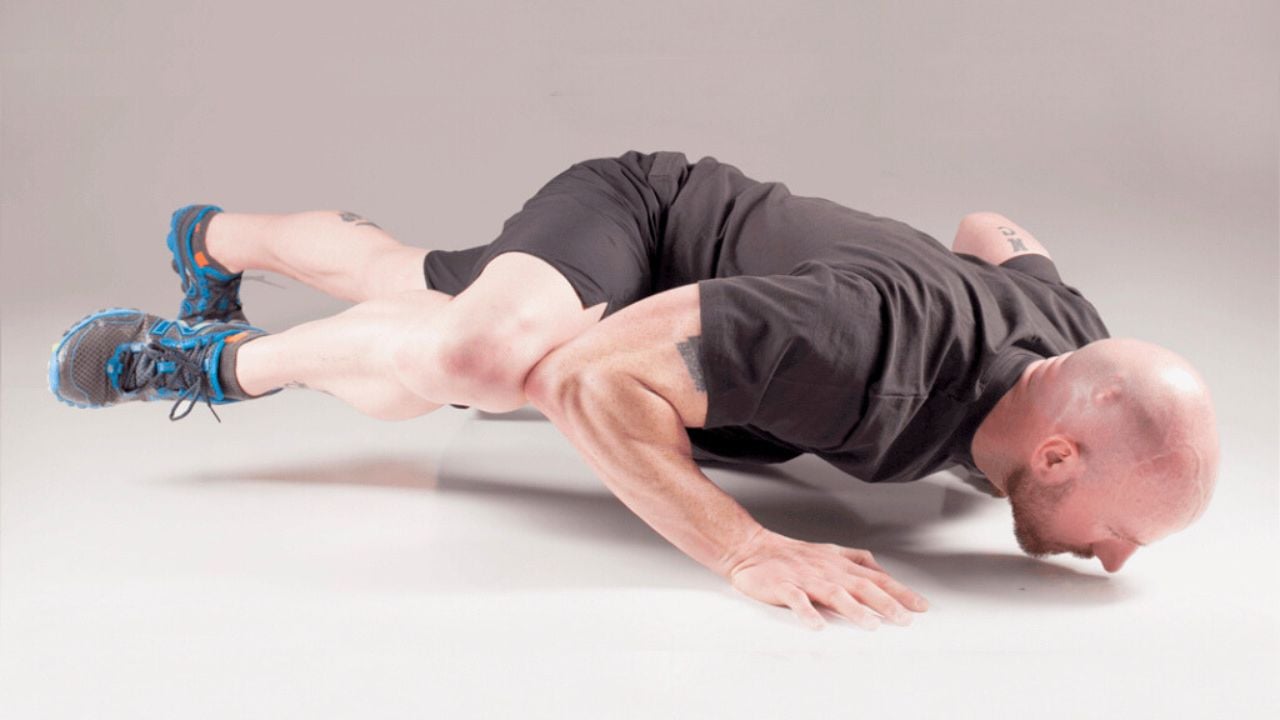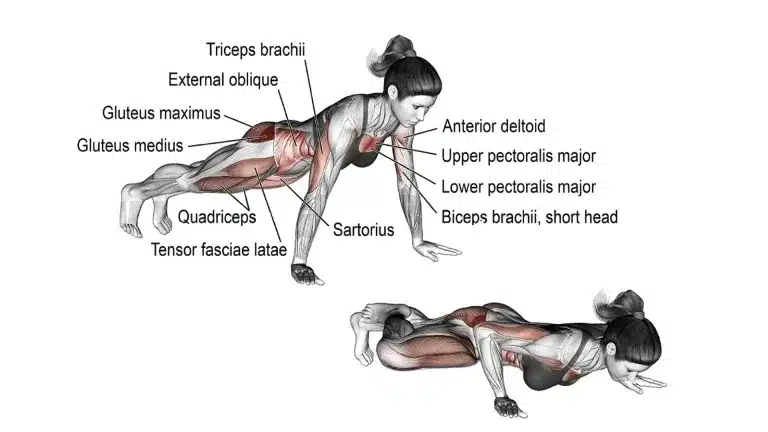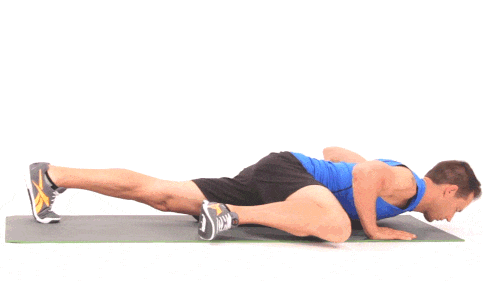Spiderman push-ups are dynamic, full-body exercises that combine the strength-building benefits of traditional push-ups with core engagement and hip mobility. The exercise is named after the superhero Spider-Man’s wall-crawling movements.
This intense exercise targets your chest and triceps and engages your core, shoulders, hip flexors, and other lower body stabilizing muscles. When performed in a circuit or high-rep format, it can improve cardiovascular fitness.
The push-up movement effectively targets the chest, triceps, and shoulders.
By bringing one knee towards the elbow during the descent, you create an intense demand on the core musculature to resist rotation (anti-rotation), lateral flexion (anti-lateral flexion), and extension (anti-extension) of the spine and pelvis.
This works the deep stabilizers—the transverse abdominis, the obliques, and the quadratus lumborum—far more intensely than a standard push-up.
Want to take your gains to the next level? Discover your daily calorie needs with our free TDEE calculator

Spiderman Push-Up Muscles Worked
The Spider-Man push-up is a compound exercise that targets multiple muscle groups, including:
- Primary Muscles (Prime Movers): chest muscles (pectoralis major and minor), triceps, and shoulders (Anterior deltoids).
- Secondary Muscles (Synergists): Obliques, Rectus Abdominis and Hip Flexors (Iliopsoas, Rectus Femoris)
- Stabilizing Muscles: Transverse Abdominis, Gluteus Medius & Maximus, Serratus Anterior and Erector Spinae.

How To Do Spiderman Push-Up
- Start in a traditional push-up position with your hands placed slightly wider than your shoulder width and your feet hip-width apart. Ensure your wrists are stacked directly underneath or just outside your shoulders.
- Your body should form a straight line from your head to your heels. Avoid letting your hips sag towards the floor or pike up towards the ceiling.
- Actively brace your core as if preparing for a punch. Engage your abdominal muscles, obliques, and lower back. Squeeze your glutes tightly—this helps stabilise the pelvis and prevent the hips from dropping.
- As you lower your body, lift your right foot off the ground simultaneously and bring your right knee towards your right elbow.
- Your knee should come to the outside of your elbow, paralleling your thigh to the ground.
- Push through your hands to raise your body back to the starting position.
- As you do this, straighten your right leg back to its original position.
- Immediately repeat the entire movement on the opposite side (draw the other knee towards its corresponding elbow as you lower).
- This left-side movement followed by a right-side movement (or vice versa) constitutes one full repetition if you’re counting per cycle, or you can count reps per side (e.g., 10 reps per side).
Tips and Techniques
- Keep your core tight and your body in a straight line throughout the exercise to avoid arching your back or letting your hips sag.
- The biggest challenge is often coordinating the upper body lowering with the lower body leg drive. Think of them as two parts of one fluid movement, starting simultaneously from the high plank. Avoid completing the push-up then adding the leg, or moving the leg then starting the push-up. Practice slowly to nail this timing.
- It is a challenging exercise, so don’t rush through the movement. Take your time and focus on proper form and technique, rather than speed.
- Keep your head in a neutral position and look at the ground. Don’t look up or down, as this can strain your neck.
- As with any exercise, it’s important to warm up properly before performing it. A few minutes of light cardio, such as jogging in place or jumping jacks, can help to prepare your muscles for the workout.
- Remember to breathe correctly while performing the exercise, inhale while you lower your body and exhale when you push up.
- Recommended Reps and Sets for Spider-Man push-ups: Beginners: 2–3 sets of 5–8 reps each side. Intermediate: 3–4 sets of 10–15 reps. Introduce variations and weights. Advanced: 3–4 sets of 15–20 reps.

References
- Marcolin G, Petrone N, Moro T, Battaglia G, Bianco A, Paoli A. Selective activation of shoulder, trunk, and arm muscles: a comparative analysis of different push-up variants. J Athl Train. 2015;50(11):1126-1132. doi:10.4085/1062-6050-50.9.09
- Pacheco MM, Teixeira LAC, Franchini E, Takito MY. Functional vs. Strength training in adults: specific needs define the best intervention. Int J Sports Phys Ther. 2013;8(1):34-43.
- MacLeod M. Chartier Physiotherapie & kinSilico Labs. Core Stability for Injury Reduction and Improved Performance: Rotation and Anti-Rotation Part 2. 2021.

Manish is a NASM-certified fitness and nutrition coach with over 10 years of experience in weight lifting and fat loss fitness coaching. He specializes in gym-based training and has a lot of knowledge about exercise, lifting technique, biomechanics, and more.
Through “Fit Life Regime,” he generously shares the insights he’s gained over a decade in the field. His goal is to equip others with the knowledge to start their own fitness journey.
